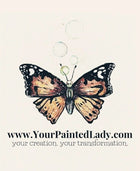When we Think one thing and Feel another, we experience confusion. Our words and actions might even change like tides of the sea, and phases of the moon. It is not until we align our thoughts with our feelings that we will become centered, and from this position we are able to effectively communicate with others. The problem is, we live in a society that can sometimes dismiss the concept of emotions, or has taught us that we should not have them at all. So, those feelings, which are connected to our needs, become buried along with what we truly want and need.
Feelings are energy in motion. When discomfort is present, it is telling us that those feelings need space to move. Whatever it is that comes to stir inside of us unexpectedly, that is a natural part of life, and it is there for purposes of growth and maturation. Feelings and rising needs are sometimes difficult to label. They do not need to be fixed, just brought to the surface. Feelings are not wrong or dangerous. They are part of humanity, propelling us onward to the next level, helping each of us grow and learn through experiences, and relationally. Without feeling, life is empty and meaningless.
It can be challenging to acknowledge how we feel. Art can have a restorative and rejuvenating aspect, helping us to go within, and channel those worlds when words are either too painful or aren't enough. This is why in classes, guests are always prompted to do what comes most instinctive and natural to their own composition. Let everything else fall away. Then, just flow.
All feelings are unique but the molecules that convey them are the same in all of us. Our life experiences are unique. However, there is something that all experiences have in common and that is every brain will aim for its own survival. Understanding the mechanisms and functions can build new circuits of happiness and help rewire our programming through new habit formations. In this way, we come to break unhelpful cycles that do not contribute to our wellbeing.
Art inevitably tells our own personal stories in a non-judgmental form, bringing to surface our thoughts, our feelings, our experiences, our values, and beliefs without constricting them. It also helps to rebuild them when we need to. Through art we are offered a chance to be honest with ourselves, to get to know our wants and needs from a deeper perspective, experiencing an opportunity to transform decisions and find reasons behind our joys and our pains. It is a vehicle that can help drive us as we navigate new life directions. Acknowledging the hidden places within is the first step to finding comfort through the discomfort. Coming to know ourselves again through different stages of growth and change can be one of the most empowering forms of healing as we reach self actualization.

